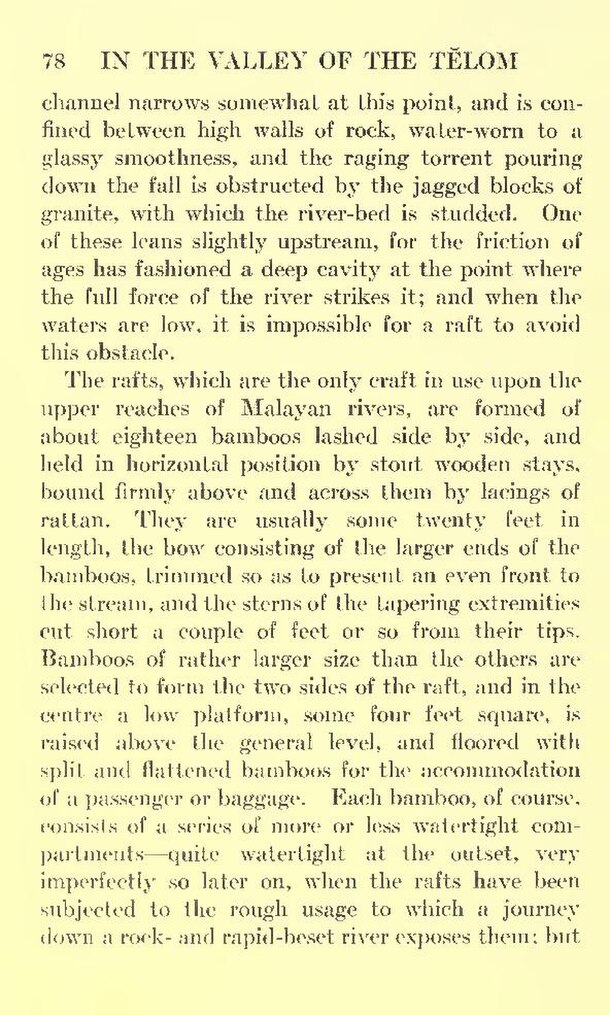channel narrows somewhat at this point, and is confined between high walls of rock, water-worn to a glassy smoothness, and the raging torrent pouring down the fall is obstructed by the jagged blocks of granite, with which the river-bed is studded. One of these leans slightly upstream, for the friction of ages has fashioned a deep cavity at the point where the full force of the river strikes it; and when the waters are low, it is impossible for a raft to avoid this obstacle.
The rafts, which are the only craft in use upon the upper reaches of Malayan rivers, are formed of about eighteen bamboos lashed side by side, and held in horizontal position by stout wooden stays. bound firmly above and across them by lacings of rattan. They are usually some twenty feet in length, the bow consisting of the larger ends of the bamboos, trimmed so as to present an even front to the stream, and the sterns of the tapering extremities cut short a couple of feet or so from their tips. Bamboos of rather larger size than the others are selected to form the two sides of the raft, and in the centre a low platform, some four feet square, is raised above the general level, and floored with split and flattened bamboos for the accommodation of a passenger or baggage. Each bamboo, of course. consists of a series of more or less watertight compartments—quite watertight at the outset, very imperfectly so later on, when the rafts have been subjected to the rough usage to which a journey down a rock-and rapid-beset river exposes them: but
